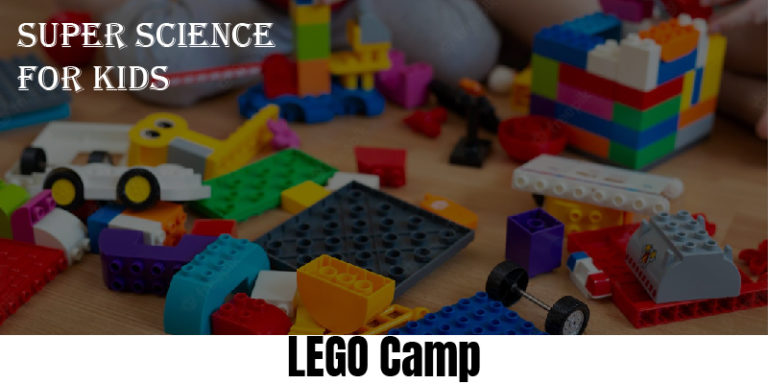What does LEGO science mean?

Several STEM-based engineering kits are available for kids to enhance their understanding of Science, Technology, Engineering, and Math. These fun-filled kits are designed to instill learning in young minds and help them understand the complicated topics of architecture, mechanics, and physics through building games. This article will help you understand what exactly happens in the LEGO science summer camp and how they are beneficial for nurturing your child from a very young age.
What do you understand by a LEGO science camp?
LEGO is a popular brand of toys that promotes STEM learning in the younger generation in the most inventive and unique manner. If you are planning on sending your child on a LEGO camp trip, then rest assured you will be taking one of the best decisions in promoting their interest in scientific learning.
In these camps, the kids are introduced to using LEGO kits for building technical items like gears and axels. These kits used in the science summer camp are known to challenge your child to build some very advanced projects.
How does LEGO promote structural engineering?
Structural engineering and LEGO Empire have two coinciding points: a deeper knowledge of physics combined with creativity. The LEGO camps for kids conducted for kids with enthusiasm for science promotes understanding of structural engineering while introducing them to the limitations of raw materials they would use to make the structures.
Here are certain points that you must keep in mind when at crossroads with weighing the advantages of sending your kid to a LEGO-based science camp:
1. Learning about scales to construct:
Structural engineering and LEGO building are based on the concept of scale –practically promoting STEM learning. Building a large toy from LEGO blocks will require an equal level of knowledge used by structural engineers in scale measurement, as they use similar concepts to create large spaces that can accommodate a certain number of people.
In fact, architects and structural engineers require the knowledge of modeling and planning the structure of a certain building before even getting ahead with the construction process in the real world. For instance, if your child wants to build a robot or a skyscraper, they need to understand the concept of scaling to calculate the structure’s height and depth.
Therefore, similar STEM concepts are being used in real-life engineering, which will be introduced to younger people in a science summer camp through LEGO blocks.
2. Offer proper support to the structure:
By creating a solid LEGO structure, the kids are exposed to understanding how the brick structure of a building or a house works. In the LEGO camps for kids, the kids are exposed not only to STEM education but also to the basics of architecture.
For instance, if a participant in the camp wants to build a quaint village through LEGO blocks and comes to realize that one of the houses in the village is not quite strong, they will be taught how to provide support and brace the structure instead of getting rid of the entire building.
In the LEGO camps for kids, your child will be taught about the necessary aspects of structural engineering, including beams, columns, and trusses through axles and peg connectors in the LEGO counterparts.
3. Ways of balancing and managing constraints:
The way in which structural engineers function, is influenced by the loading of constraints. If we try to describe it in layman’s language –an engineer needs to identify what will happen or if similar factors affect the object or the building.
With the use of LEGO blocks, the children in the science summer camp will be taught to consider two different ways of loading constraints: dynamic and static loading. In the Static Loading technique, the object or structure remains stationary while the pressure or weight is exerted.
In the case of the dynamic loading technique, the object on which the pressure will be exerted could be in a dynamic state. Here, we can take an example of an airplane. To enable the kids to differentiate between static and dynamic constraints, they are asked to make buildings for stationary observations; and robots or remote control cars to understand the dynamic aspects.
4. Designing while keeping nature in mind:
Structural engineers have used LEGO projects for several visual experiments and competitions to eliminate the pitfalls of a model. Through the LEGO blocks, engineers can identify how their original structures will behave when exposed to natural calamities such as –earthquakes and get seismic loading information of the structure.
When you send your child to a LEGO camp, they learn about seismic wave ranges and their associated problems. Students learn to craft buildings with support trusses between the layers of the building or make heavier tops to counter natural calamities.
The campers will also be offered several pieces of equipment they can use to place their structures in and test the impact of the earthquake and other such natural disasters, which will help them note down all the shortcomings that their creation possesses.
Conclusion:
Here, we have discussed how students can benefit from structural engineering and the architectural field when exposed to LEGO-based science summer camp. But, these science camps are not just limited to structural engineering; they teach every aspect of STEM.
There are various programs available today; we hope that the information provided in this article has helped you reach a conclusive phase.
If you are looking for any interesting STEM programs to send your children to, we are the one for you! At Super Science, we aim to expose your kids to all aspects of scientific studies and train them with the basics of engineering and robotic studies. To get in touch with us, you call us at (908) 684-2382 or drop us an email at [email protected]


Leave a Reply